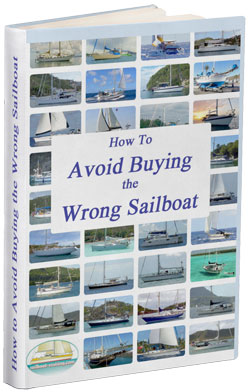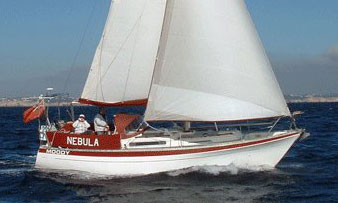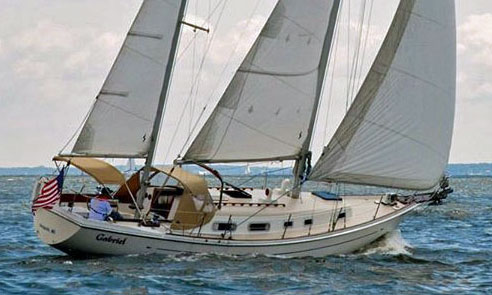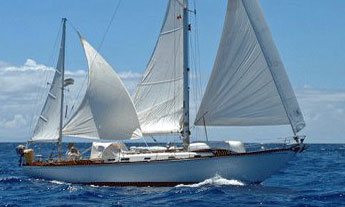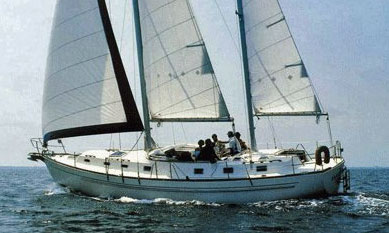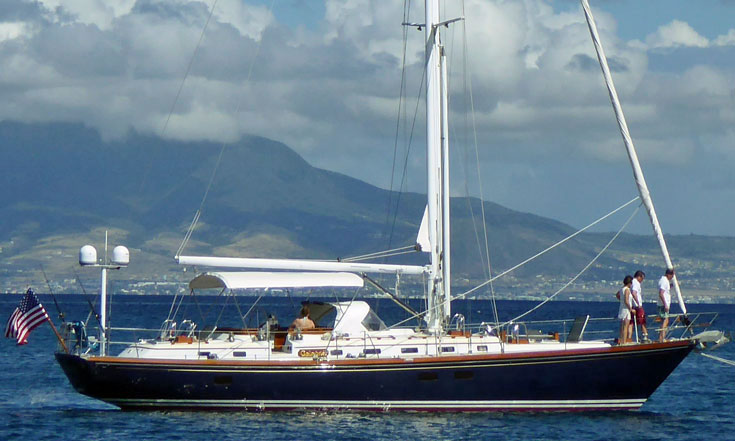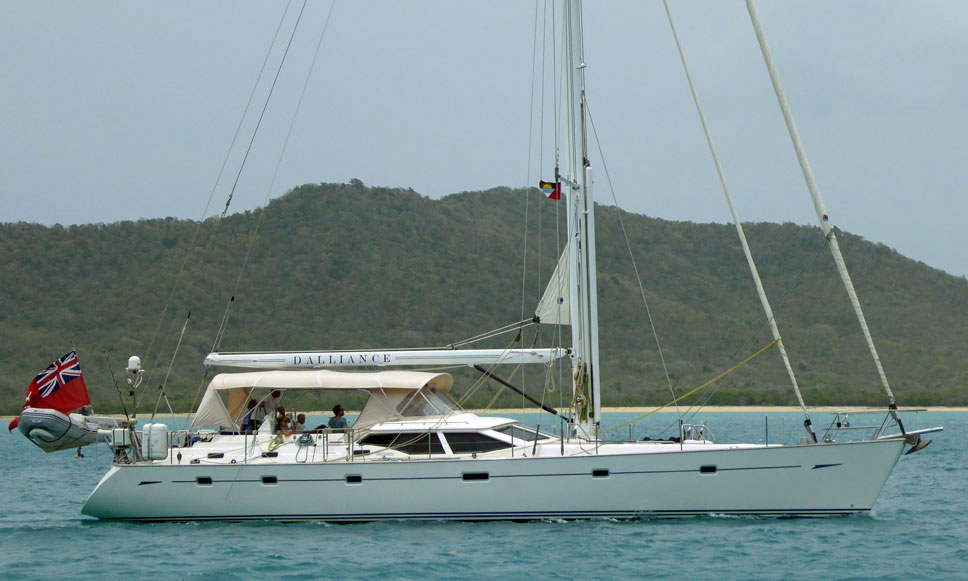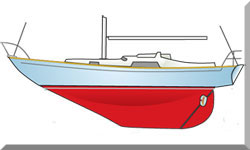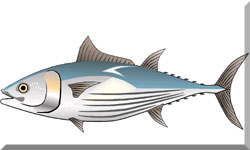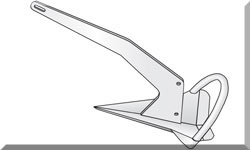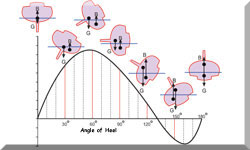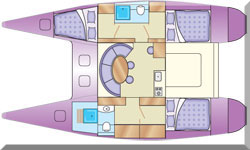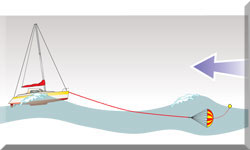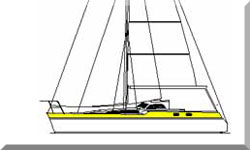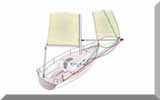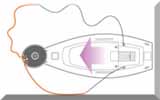- Home
- Cruiser Yachts under 30'
- Jouet Regent
The Jouet Regent 27 Sailboat
The Jouet Regent 27, a masthead sloop, was designed by Jean-Pierre Jouët and built in France by Yachting France.
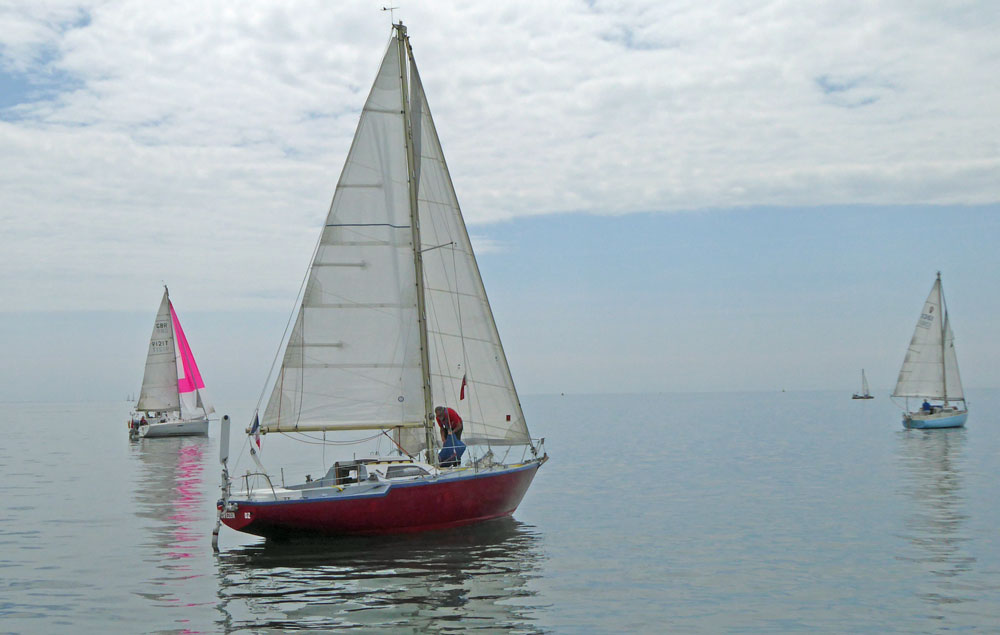 Jouet Regent 27
Jouet Regent 27Published Specification for the Jouet Regent 27
Keel & Rudder Configuration: Fin keel with spade rudder
Hull Material: Fibreglass (FG) / GRP
Length Overall*: 27'5" / 8.36 m
Waterline Length*: 21'6" / 6.55 m
Beam*: 8'2" / 2.49 m
Draft*: 4'6" / 1.36 m
Rig Type: Masthead Sloop
Displacement*: 7,055.00 lb / 3,200 kg
Ballast*: Not known
Sail Area*: 377 ft² / 35.02 m²
Water Tank Capacity: Not known
Fuel Tank Capacity: Not known
Hull Speed: 6.21 knots
Designer: P. Jouet & Cie / Jean-Pierre Jouët
Builder: Jouët and Yachting France
Year First Built:
Year Last Built: Not known
Number Built: Not known
* Used to derive the design ratios referred to later in this article - here's how they're calculated...
Design Options & Alternatives
None are known to have been available for the Jouet Regent 27
Sail Areas & Rig Dimensions
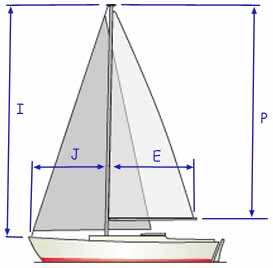 Sail Areas & Rig Dimensions
Sail Areas & Rig DimensionsSail Areas
- Mainsail Area: Not known
- 100% Foretriangle Area: Not known
- Total Sail Area: 377 ft² / 35.02 m².
Rig Dimensions
Not known
Published Design Ratios
The Key Performance Indicators (KPIs)
The key design ratios for the Jouet Regent 27 are:
- Sail Area/Displacement (SA/D): 16.5
- Displacement/Length (D/L): 317
- Ballast/Displacement Ratio (B/D): Not known
- Capsize Screening Formula (CSF): 1.7
- Motion Comfort Ratio (MCR): 28.5
Theoretical Sailing Characteristics
Based on the published design ratios, here's a detailed description of the theoretical sailing characteristics of the Jouet Regent 27:
- Sail Area/Displacement Ratio (SA/D: 16.5): This ratio, falling between 16 and 20, indicates that the Jouet Regent 27 is expected to have reasonably good performance. It suggests the boat will approach her maximum hull speed readily and should satisfy the sailing performance expectations of most cruising sailors. A ratio in this range implies it's not a high-performance racing boat, but it's also not significantly under-powered.
- Ballast/Displacement Ratio (Not known): The lack of a published ballast/displacement ratio makes it difficult to definitively assess the boat's stiffness under sail. Generally, a higher ballast ratio (over 40%) indicates a stiffer, more powerful boat that can stand up to wind better. Without this information, its righting moment (ability to resist heeling) cannot be reliably predicted from this ratio alone.
- Displacement/Length Ratio (D/L: 317): With a D/L ratio over 275, the Jouet Regent 27 is categorized as a heavy displacement cruising boat. This implies it will have a stable and comfortable motion in a seaway, which is beneficial for cruising. It also means it can be loaded with cruising gear and equipment without significantly affecting its waterline or performance. While not ideal for light coastal sailing or achieving high speeds, it is expected to perform well in more challenging offshore conditions.
- Comfort Ratio (28.5): Ted Brewer's Comfort Ratio of 28.5 places the Jouet Regent 27 in the category of a coastal cruiser. This suggests that the crew comfort in a seaway would be similar to what one would expect from a coastal cruiser. This ratio doesn't suggest an "extremely heavy offshore boat" (which would have a ratio over 50), and it's not a lightweight racing boat (under 20). For those prone to seasickness, this might not be the most encouraging news for extended offshore passages.
- Capsize Screening Formula (CSF: 1.7): A Capsize Screening Formula of less than 2.0 indicates that the Jouet Regent 27 would be a better choice of sailboat for ocean passage-making than a boat with a CSF rating of more than 2.0. This formula suggests a good level of initial stability and resistance to capsize, making it suitable for more open water conditions.
In summary, the Jouet Regent 27 is theoretically a heavy displacement masthead sloop designed for comfortable coastal and potentially moderate offshore cruising. Its sail area is adequate for good performance without being a racer, and its heavy displacement contributes to a stable motion. The capsize screening formula suggests a reasonable degree of safety for open water, although the comfort ratio aligns more with coastal cruising expectations.
But the Design Ratios Don't Tell the Whole Story...
While design ratios offer a valuable quantitative method for comparing and understanding a sailboat's theoretical characteristics, they have several significant limitations:
Simplification and Generalization: Design ratios are inherently simplifications of complex hydrodynamic and aerodynamic interactions. They reduce a multitude of design factors (hull shape, keel profile, rudder design, rig geometry, weight distribution, construction materials, etc.) to a few numerical values. This generalization can sometimes mask nuances in a boat's actual performance.
Ignores Qualitative Factors: Ratios do not account for qualitative aspects of design that significantly impact sailing characteristics, such as:
- Balance: A well-balanced boat is easier to steer and less fatiguing, regardless of its ratios. Ratios don't predict weather helm or lee helm.
- Ergonomics and Deck Layout: How easily sails can be trimmed, how comfortable the cockpit is, and the efficiency of deck hardware all influence practical sailing but aren't captured by ratios.
- Build Quality and Condition: Two boats with identical design ratios can perform very differently if one is poorly built, has saggy sails, or is carrying excessive weight from accumulated gear.
- Sail Shape and Condition: The actual shape and condition of the sails have a profound impact on performance, far beyond a simple "sail area" number.
- Foil Sections: The specific airfoil or hydrofoil sections of the keel and rudder, and their aspect ratios, greatly affect lift and drag, but are not directly incorporated into the basic design ratios.
Dependent on Input Data Accuracy: The accuracy of the ratios relies entirely on the accuracy of the input data (LOA, LWL, beam, draft, displacement, sail area). Builders or designers may sometimes use "optimistic" figures (e.g., light-ship weight instead of half-load displacement, or including overlapping genoas for sail area) to make a boat appear more high-performance than it is in reality.
Assumptions of Load and Trim: Ratios are typically calculated based on a "half-load" displacement (boat equipped for sailing with crew and half consumables). Actual performance will vary significantly with different loading conditions. An overloaded boat will have a higher effective D/L, affecting speed and motion.
Context-Dependent Interpretation: The "ideal" range for a ratio depends heavily on the intended purpose of the boat. A high SA/D is great for a racer but might be over-canvassed for a heavy cruising boat. A low D/L might mean good speed but a less comfortable motion.
Interaction of Ratios: Ratios don't exist in isolation. A high SA/D needs to be balanced by sufficient stability (influenced by ballast ratio and hull form) to be effective. A low D/L might suggest speed, but if the boat also has poor stability, it won't be able to carry sail effectively.
Ignores Hydrodynamic and Aerodynamic Efficiency: Ratios do not capture the efficiency of the hull and rig designs in generating lift and minimizing drag. For example, a modern, efficient keel and rudder design can outperform an older, less efficient design even if their basic ratios are similar.
Scaling Effects: For smaller boats or models, simple scaling of design ratios from larger boats can be misleading. Air density and wind speed are not scaled, meaning a "scale-sized" rig on a small model is often over-canvassed for practical sailing. Smaller boats also inherently have different stability characteristics and motions compared to larger vessels, even with similar ratios.
In conclusion, design ratios provide a useful starting point for understanding a sailboat's theoretical capabilities and for comparative analysis. However, they should always be interpreted with caution and in conjunction with other information, such as the boat's intended purpose, its full design details, and actual sailing reviews, to form a comprehensive picture of its real-world performance and characteristics. They are indicators, not definitive predictors.
More Specs & Key Performance Indicators for Popular Cruising Boats
Recent Articles
-
Planning Your Sailboat Liveaboard Lifestyle: An Ocean Sailor's Guide
Dec 06, 25 05:18 AM
Seasoned sailors share their methodical risk analysis for planning a secure Sailboat Liveaboard Lifestyle, covering financial, property, and relationship risks. -
Marine Cabin Heaters: The Expert’s Guide to Comfort & Safety at Sea
Dec 05, 25 06:52 AM
Choose the best Marine Cabin Heaters for your vessel. Expert advice on diesel, paraffin, and hot water systems for year-round cruising comfort. -
Marine Water Heating Systems: Free Hot Water from Your Boat's Engine
Dec 03, 25 05:06 PM
Tap into your engine's heat to get free hot water on board. An experienced ocean sailor's guide to marine water heating systems, calorifiers & safety.
